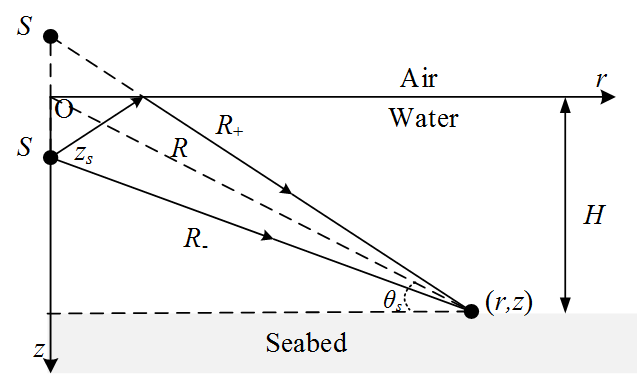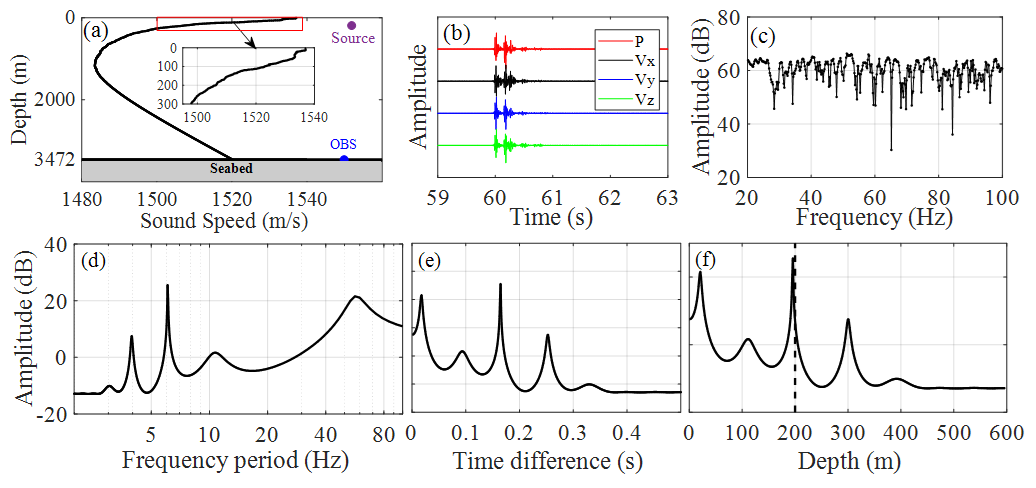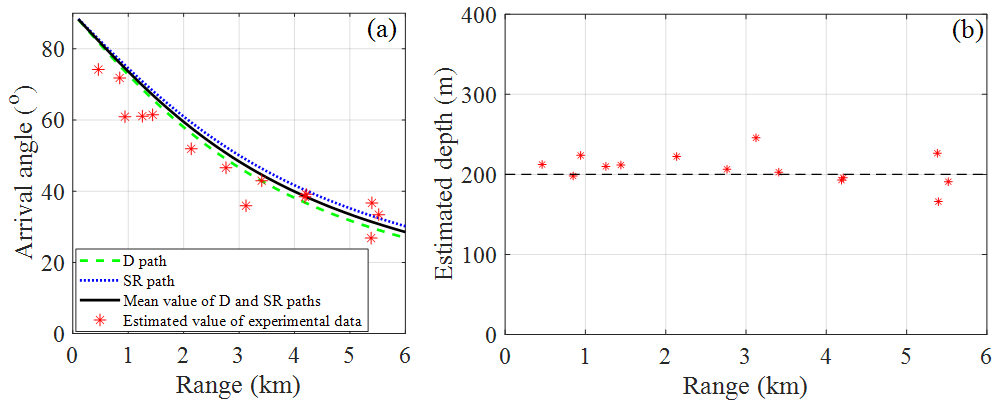Source depth estimation in the deep ocean is a hot topic in recent years. For acoustic receiver deployed at the bottom of the direct arrival zone of a submerged source at short horizontal ranges in deep ocean, the interference pattern of the direct and surface-reflected acoustic arrivals shows periodic modulation (Figure 1). It is directly related to the source depth, source frequency and vertical arrival angle. Researchers have been studied in the source depth estimation using this interference structure in recent years. However, the procedure requires big extent of the target’s track or a vertical line array.
Recently, researchers from the Institute of Acoustics of the Chinese Academy of Sciences (IACAS) proposed a passive broadband source depth estimation method using a single vector sensor in deep ocean. They took advantage of the depth-dependent modulation changes of the interference structure along the frequency domain at a certain arrival angle. Afterwards, the source depth could be estimated directly.
Researchers demonstrated this source depth estimation method by experimental data conducted in a sea experiment. They used explosive sources with nominal explosive depth equal to 200 m. The receiver was a four-component ocean-bottom seismometer (OBS) deployed at the ocean bottom. During the experiment, 14 sources were dropped from the rear deck of the ship and were distributed along a line from 0.5 km to 5.5 km distance from the receiver. In the depth estimation using the signal recorded by a four-component ocean-bottom seismometer for the source exploding at 4.21 km, all 14 estimated source depths were around the nominal source depth.
Different from the isovelocity model, the sound velocity changed with depth in the real environment. For sources at relatively short ranges, variation of the sound speed with depth had little effect on the frequency modulation period because the arrival angle was steep. While for remote sources, ray bending was non-negligible and the isovelocity model was no longer suitable.
Under such circumstances, more works, such as the frequency interference period modification considering the water stratification, are needed in the future to improve the accuracy of the source depth estimation for remote sources.

Figure 1. Illustration of the direct and surface-reflected arrivals (Image by IACAS)

Figure 2. Depth estimation result using the signal source exploding at 4.21 km. (a) synthetic SSP, (b) normalized waveforms of the pressure and particle velocity, (c) spectrum of the acoustic intensity, (d)-(f) results of the MUSIC processing of the spectrum of the acoustic intensity (Image by IACAS)

Figure. 3.The vertical arrival angle (a) and source depth (b) estimation results of all 14 sources (Image by IACAS)
The study, published online in The Journal of the Acoustical Society of America, was supported by the National Natural Science Foundation of China (No.11804364, No.11804362, No.11874061).
Reference:
QI Yubo, ZHOU Shihong, LIANG Yuquan, DU Shuyuan, LIU Changpeng. Passive broadband source depth estimation in the deep ocean using a single vector sensor. The Journal of the Acoustical Society of America. 2020, 148, EL88-EL92. DOI: 10.1121/10.0001627.
Contact:
ZHOU Wenjia
Institute of Acoustics, Chinese Academy of Sciences, 100190 Beijing, China
E-mail: media@mail.ioa.ac.cn


